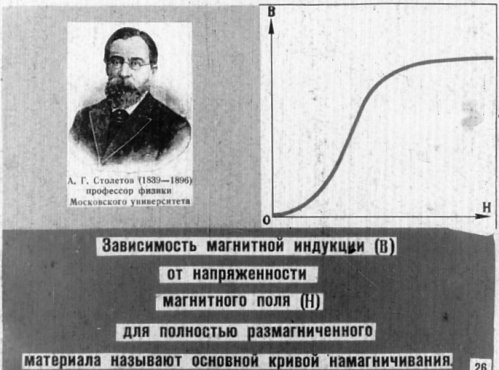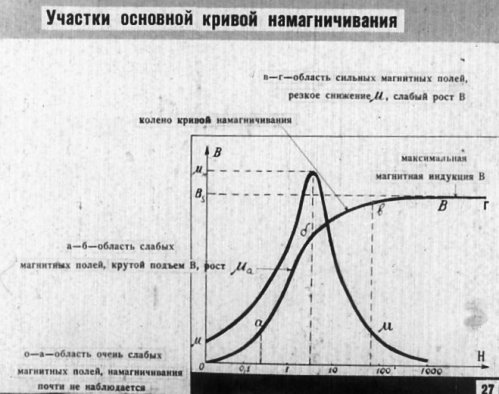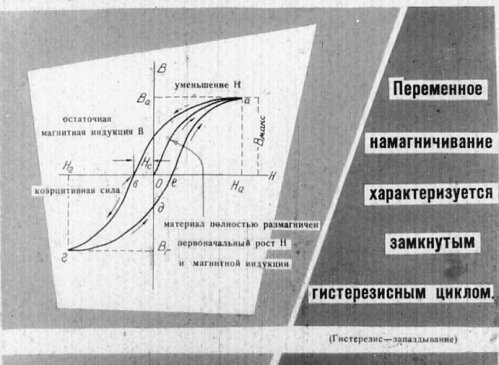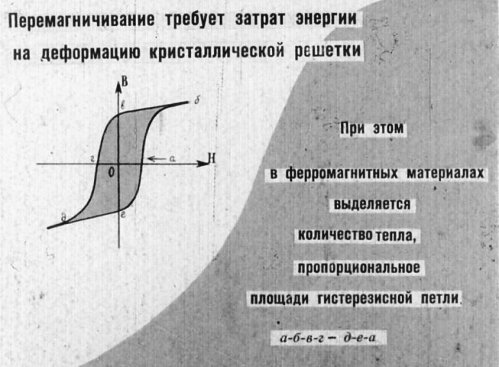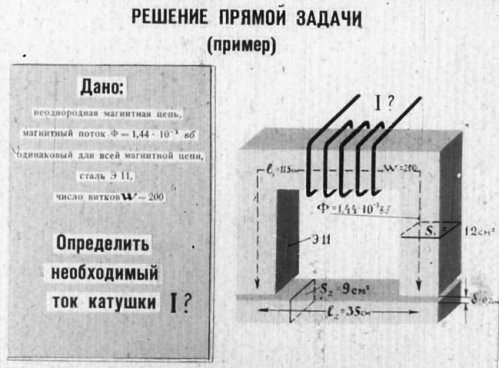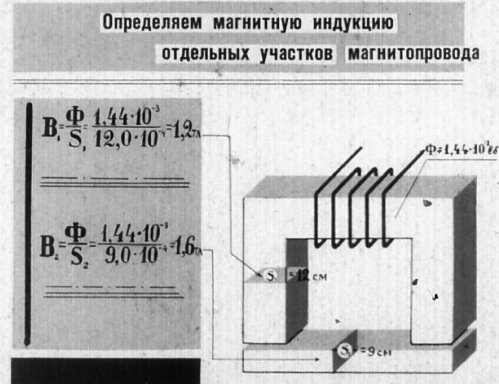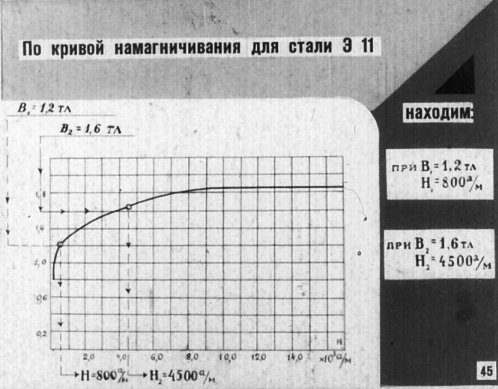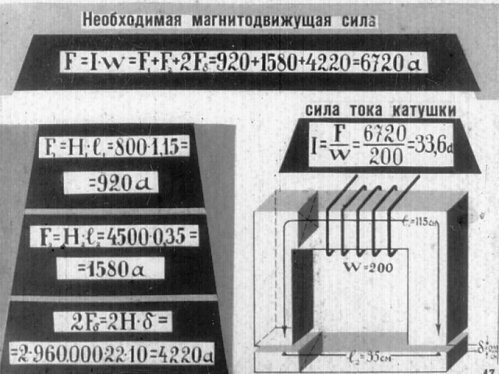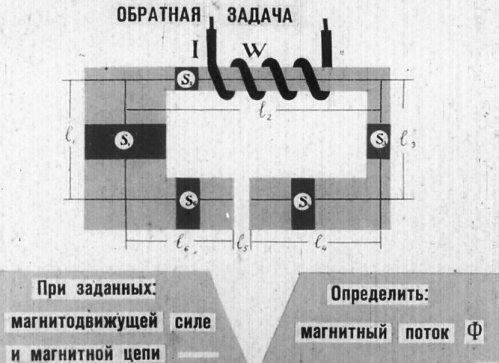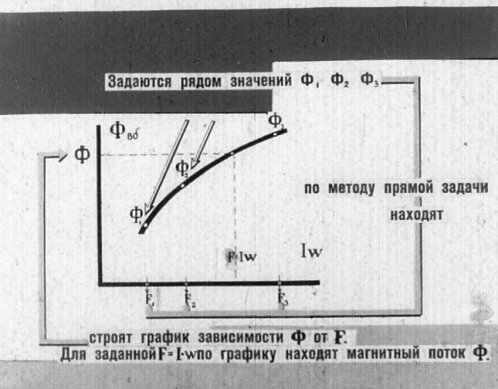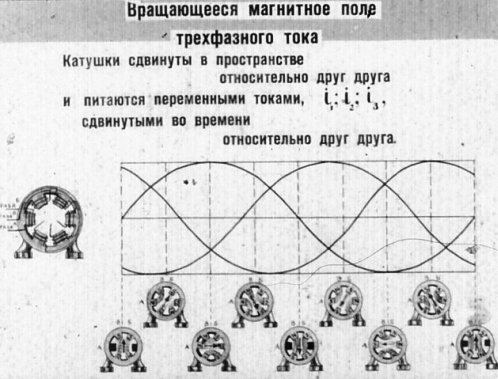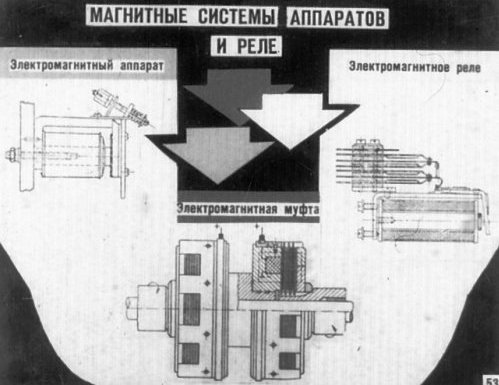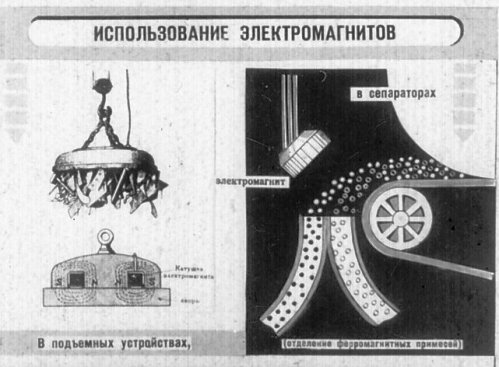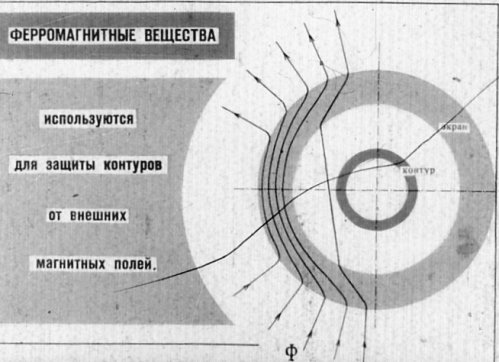Magnetic action of current in photographs from old filmstrips
A magnetic field is generated around the current-carrying wire. This is the result of the rotation of electric charges (electric current). The magnetic field is the space in which the magnetic needle is oriented.
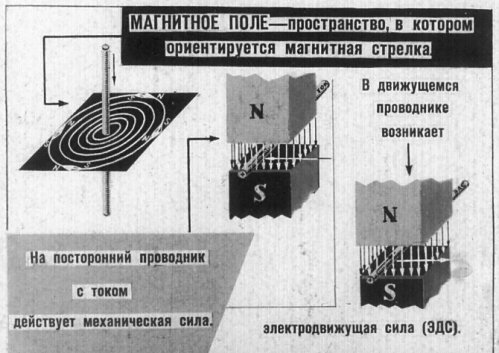
The magnetic field is visualized using magnetic lines. The collection of magnetic lines is called magnetic flux (F). The unit of magnetic flux is the weber (wb).
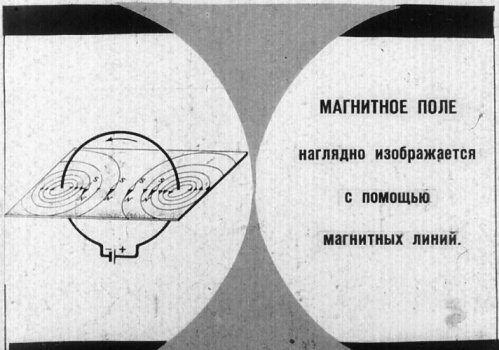

Magnetic lines are always closed (continuous). At any point in the magnetic field, the magnetic lines are tangent to the magnetic needle. The direction of the magnetic lines around the current-carrying wire coincides with the direction of rotation of the gimbal as it moves along the current (gimbal rule).
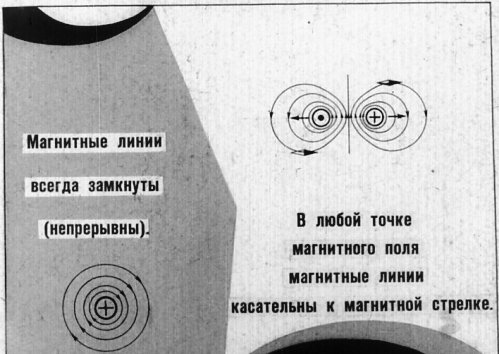
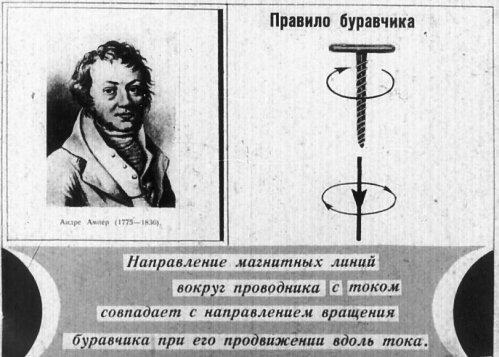
A wire wound in a spiral is called a solenoid. The magnetic fields of the solenoid coils add up to form a total magnetic field.

Magnetic induction (B) — magnetic flux density (F) perpendicular to the surface (S) at a given point. The magnetic field acts on a wire carrying a current (I) with a force F = BILSinα.The direction of the force is determined by the left-hand rule: «If the magnetic flux F enters the palm of the left hand and the current flows from the palm to the fingers, then the thumb, left aside, will indicate the direction of the force ( movement). «
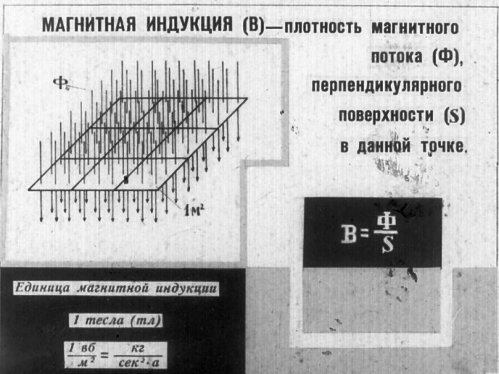
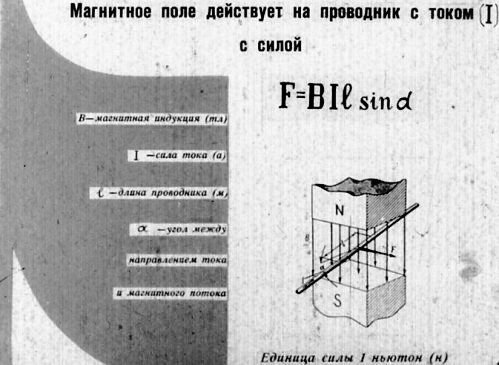
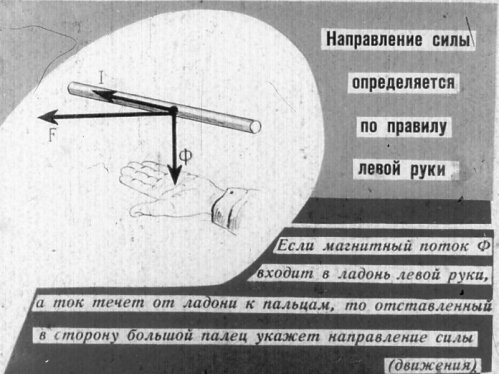 V.F. Mitkevich's rule: Magnetic lines tend to follow the shortest path and act elastically on a current-carrying conductor, trying to push it out of the magnetic field.
V.F. Mitkevich's rule: Magnetic lines tend to follow the shortest path and act elastically on a current-carrying conductor, trying to push it out of the magnetic field.
 Permeability characterizes the properties of the medium and determines the magnitude of the magnetic induction (B). Relative permeability shows how many times the magnetic induction in a given medium at a given current differs from the magnetic induction in a vacuum.
Permeability characterizes the properties of the medium and determines the magnitude of the magnetic induction (B). Relative permeability shows how many times the magnetic induction in a given medium at a given current differs from the magnetic induction in a vacuum.
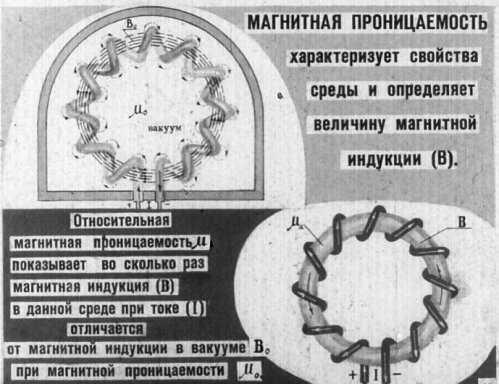
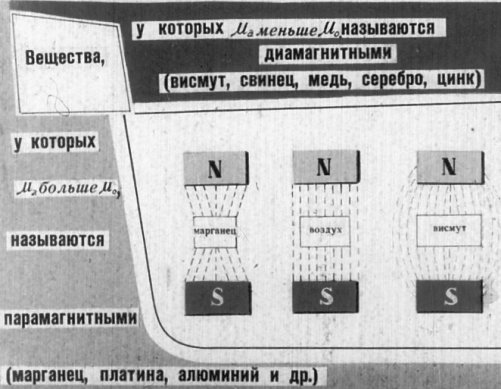
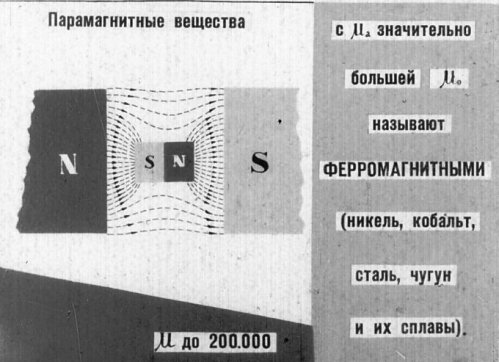 Magnetic induction also depends on the magnitude of the current and the shape of the arrangement of the loops of the wires, which is taken into account by the strength of the magnetic field (H).
Magnetic induction also depends on the magnitude of the current and the shape of the arrangement of the loops of the wires, which is taken into account by the strength of the magnetic field (H).
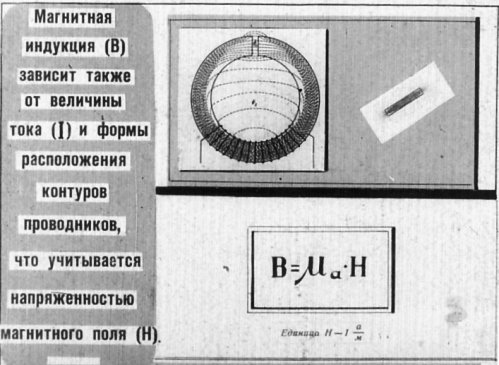 The law of the total current: "The algebraic sum of the products of the lengths of the circuit closed around the current-carrying conductors, the strength of the magnetic field and the cosine of the angle between them is equal to the sum of these currents (total current)."
The law of the total current: "The algebraic sum of the products of the lengths of the circuit closed around the current-carrying conductors, the strength of the magnetic field and the cosine of the angle between them is equal to the sum of these currents (total current)."
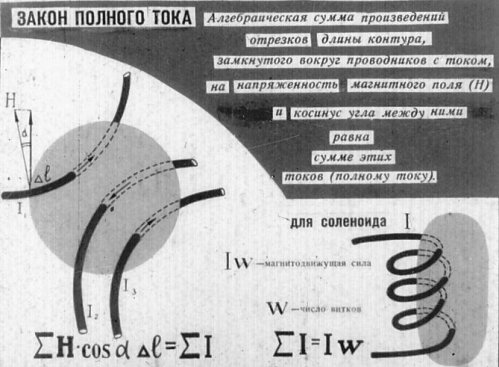
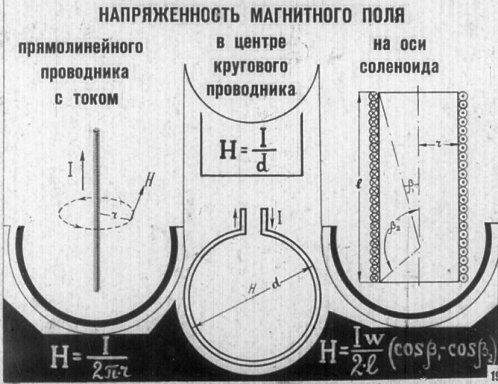
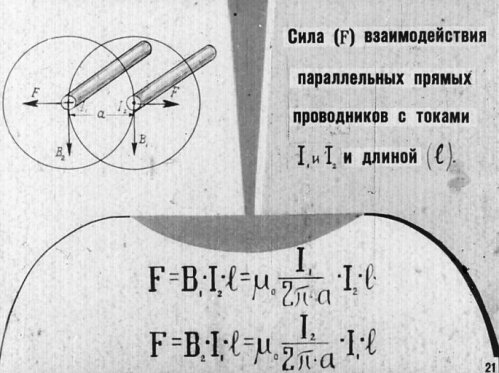 The magnetic permeability of ferromagnetic materials does not remain constant and depends on the strength of the magnetic field. The rotation of electrons around the nuclei of atoms creates elementary magnetic fields that are oriented under the action of an external magnetic field, increasing the total magnetic flux. The introduction of ferromagnetic materials into the magnetic field significantly increases the magnetic induction. Magnetization can reach its highest value (saturation) when all elementary magnetic fields coincide in direction with the external magnetic field.
The magnetic permeability of ferromagnetic materials does not remain constant and depends on the strength of the magnetic field. The rotation of electrons around the nuclei of atoms creates elementary magnetic fields that are oriented under the action of an external magnetic field, increasing the total magnetic flux. The introduction of ferromagnetic materials into the magnetic field significantly increases the magnetic induction. Magnetization can reach its highest value (saturation) when all elementary magnetic fields coincide in direction with the external magnetic field.
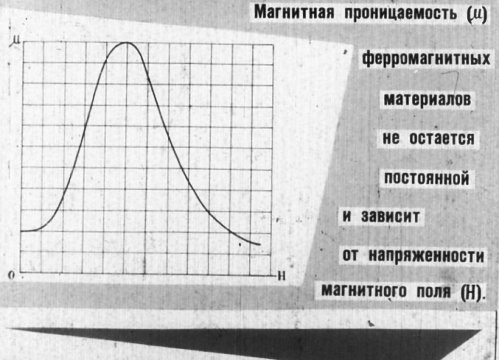
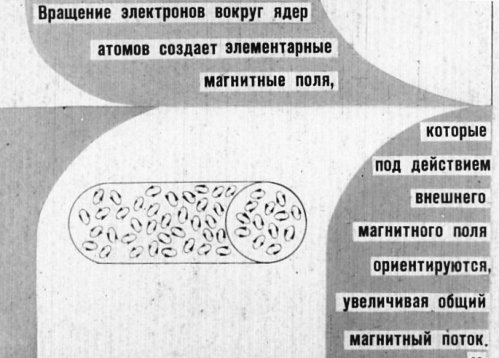
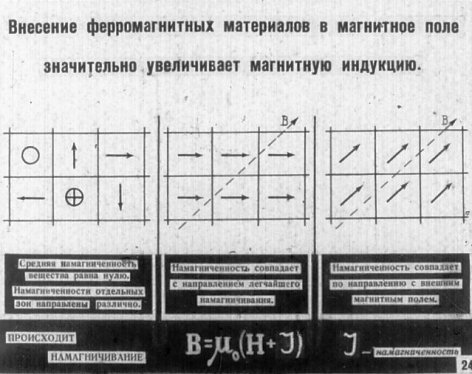
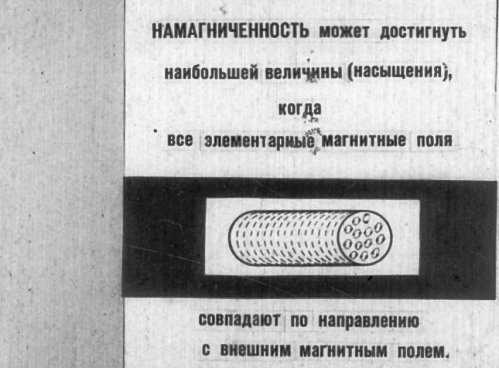 The dependence of the magnetic induction on the magnetic field strength for a completely demagnetized material is called the fundamental magnetization curve. Variable magnetization is characterized by a closed hysteresis loop. Hysteresis - lag.
The dependence of the magnetic induction on the magnetic field strength for a completely demagnetized material is called the fundamental magnetization curve. Variable magnetization is characterized by a closed hysteresis loop. Hysteresis - lag.
